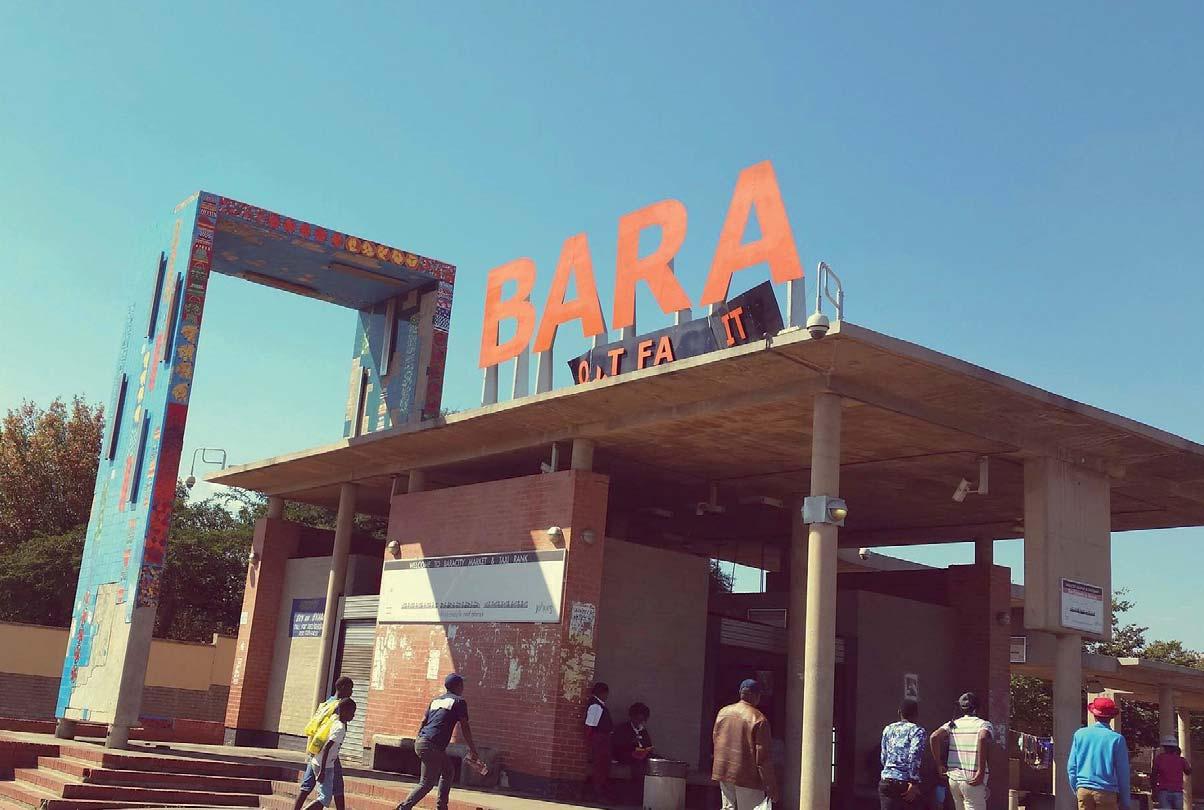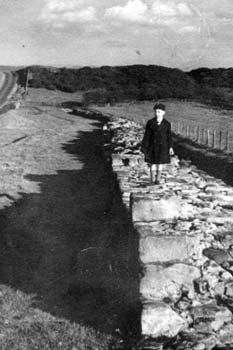O
n days out, my dad always headed out of Newcastle along the line of the Military Road, the B6318 running west, built to suppress the Jacobite rebellion of 1745, following the line of Hadrian’s Wall. Most of the Wall ended up in farm buildings and local structures from early days, but enough has remained, both above and below the ground, to keep antiquarians, professional and amateur, intrigued long into the future.
Above: 2nd Century Iron Ballista (Catapult) Bolt Right: David at Heddon on the Wall, 1950 Below: Gladiator glass bowl
Digging at Vindolanda By David Goldwater (51-62) ONs have a primary connection with the North East, so there’s no need for me to stress how beautiful England’s most northern county is. Always living locally, I have always appreciated the easy access to our county’s treasures as beyond value.
10
When our own children arrived in the 70s, we too would gravitate westwards into the countryside and having joined the newly formed Vindolanda Trust as Friends, visits to this amazing site became a regular event. Vindolanda, about a mile south of the Wall, dates from around 80AD, an auxiliary fort likely to have been key to the building of this northern frontier a generation later. The fort lies exactly half way across this part of northern England, strategically on the Stanegate Road and was occupied, abandoned and re-occupied several times over its lifetime. The result is a fascinating compression of at least ten forts, the earliest wooden, the later of these built of local stone. The layering has led to an amazing succession of discoveries, almost unique in British archaeology. Most famous are the Vindolanda writing tablets, recording daily life: letters from soldiers asking for socks and underwear, a birthday party invitation to the fort’s commander’s wife, requests for payment, lists of goods supplied and troop deployments. Organically preserved in the peat and clay, Roman soldiers used to cover up redundant structures, these, along with textiles, leather goods, wooden objects and flora and fauna have all survived thanks to the oxygen-free conditions. Vindolanda has the largest collection of footwear in the Roman Empire, over 5,000 items, with many delicate designs including makers’ stamps. It was not until the arrival of Professor Eric Birley, a Lancastrian, and founder of Durham University’s School of Archaeology, where he served as both lecturer and Professor, that serious archaeology began there. Birley moved to the house at Chesterholm (now the Vindolanda museum site, Chesterholm Museum) and following the early excavations of the 30s, his son Robin oversaw the foundation of the Vindolanda Trust and its exciting programme of archaeology. The Trust is an independent charity and controls two sites, the Fort at Vindolanda and the Roman Army Museum, about seven miles to the west, at Carvoran. Though an independent trust, Vindolanda is a protected scheduled monument and has to comply with the requirements of the Department of Culture, Media and Sport.








